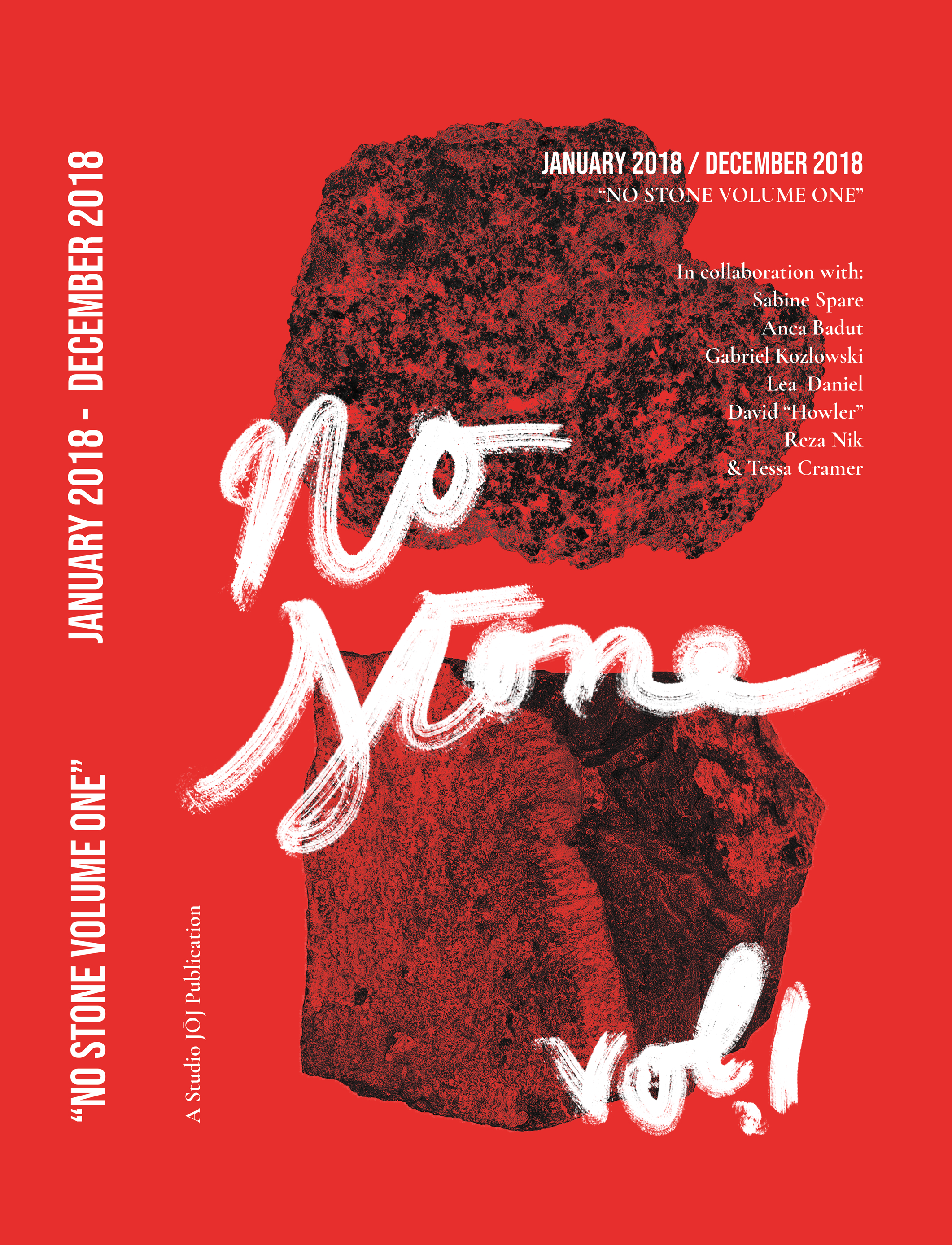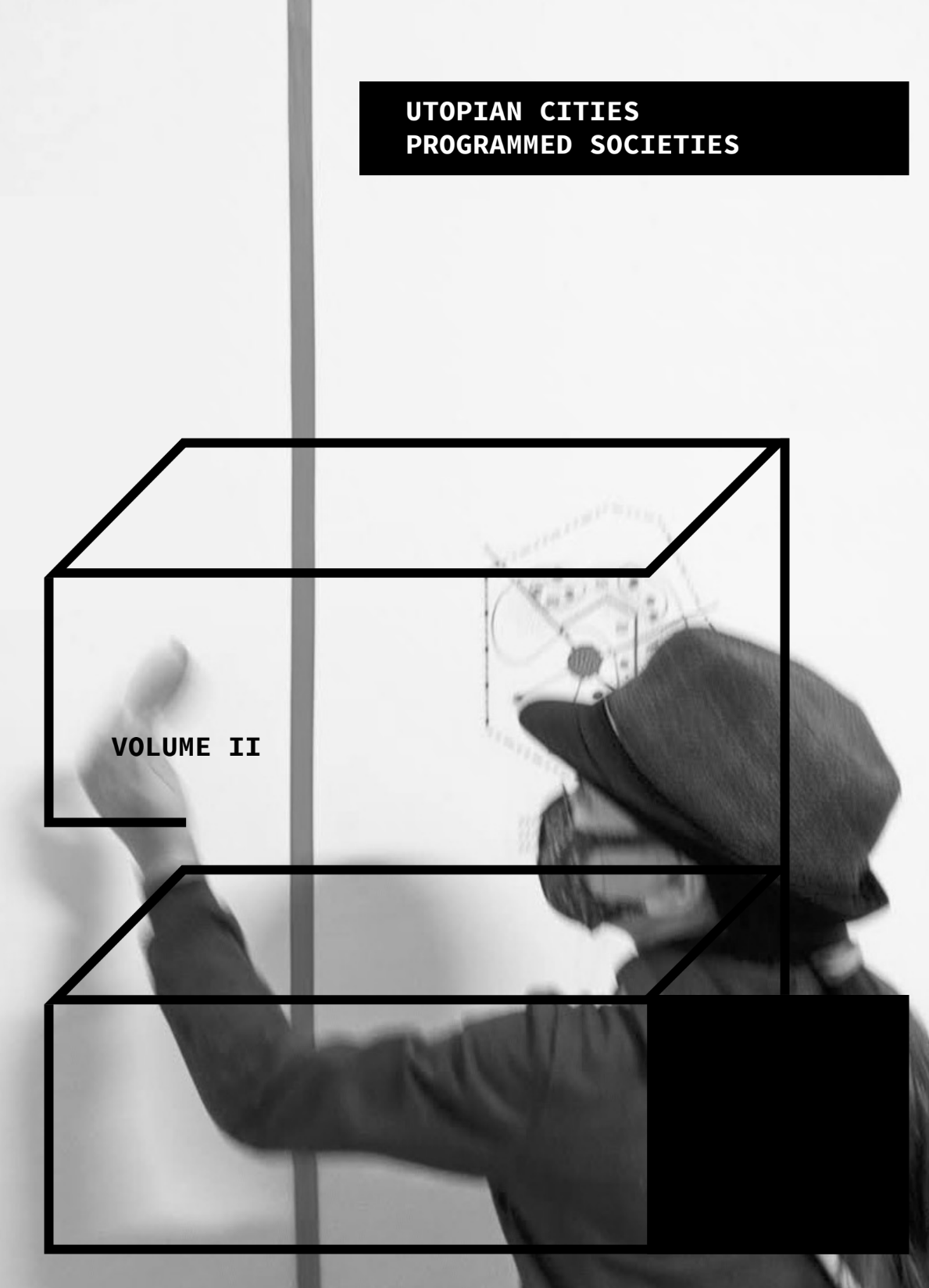NO STONE Volume 1 Book
Image courtesy of Studio JOJ
Thoughts. Research. Design in Studio JOJ, NO STONE VOLUME ONE, 2019, Publisher: Studio JOJ, USA, pp.54-85, ISBN 978-0-359-55182-8
At the beginning of 2019, Studio JOJ published NO STONE Vol.1, presenting a wide variety of artists coming from different backgrounds and exploring novel creative media.
This is the first publication to present part of my research for University of Toronto, Daniels School of Architecture - Intermediate and Advanced Visual Communication courses.
As a Research Assistant at University of Toronto, I helped exploring simulations, particles, interactions and natural phenomenon at landscape scale for the Advanced Visual Communication course. Using experimental workflows, I worked on bringing design, art and physics together, in order to generate complex systems interactions based on stories and presentations for urban and landscape design. My research was supervised by lecturer Matthew Spremulli.
More on the author and publication can be found at:
Attempts, Failures, Trials and Errors.
Notes on an exhibition of failed prototypes and rejected projects.
Maps.Environment.Sapce.Where? in The Design Journal, April 2019
ISSN: 1460-6925 (Print) 1756-3062 (Online) Journal homepage: https://www.tandfonline.com/loi/rfdj20
Coordinator: prof. Tincuța Heizel
This paper presents the "Attempts, Failures, Trials and Errors" exhibition project, which aimed to encourage artists and designers to reflect on their failures, understand their work's context, and continue experimenting. The project used deconstruction as a process of investigation and emphasized art's critical capacity to address contemporary challenges, reversing traditional R&D constructivist methods.
Utopian Cities. Programmed Societies
Image courtesy of Loughborough University, UK
Play as a tool for exploring the concept of urban systematisation and Faces of the City in Utopian Cities - Programmed Societies, Volume II, 2020, Publisher: Loughborough University, UK
The publication presents the urban systems research conducted for System in the Room and Faces of The City exhibition projects that have been created for Festival SIMULTAN, Timișoara, 2020 in collaboration with Super:Simplu Studio. Coordinator: prof. Tincuța Heizel.
(…) One decision determines another. One step you take is, more or less, a reason for a next event. The city is, therefore, working as a story shared between many characters. This is what makes it dynamic and alive. The way in which people influence urban systems and vice-versa is what offers cities an amazingly complex role-play in most of the stories and movies that we are familiar with. However, in urban planning terms, this is what brought to life the concept of feedback loop.
Only physical copies are available at the moment.
A scanned copy can be provided on request.
The System in the Room
Image courtesy of Elisava
The System in the Room, No 39 (2023): Emerging Habitats: Design as a Worldmaking Agent, Print ISSN: 2604-9155, Online ISSN: 2604-6032
This article explores the intersection of urban planning and game design through the lens of an art installation called "System in the Room," inspired by the book "The System of Spatial Planning" by Mihai Botez and Mariana Celac. The installation serves as an interactive experience aimed at fostering dialogue and debate surrounding urbanism theories and their social and political implications. By leveraging game mechanics, the installation provides a space for creative exploration and critical reflection on urban development, past socialist ideologies, and contemporary urban challenges. Through a combination of historical context, theoretical framework, and practical methodology, the article demonstrates how games can serve as powerful tools for understanding and engaging with complex urban systems and societal dynamics.
More about the publication can be found at:



